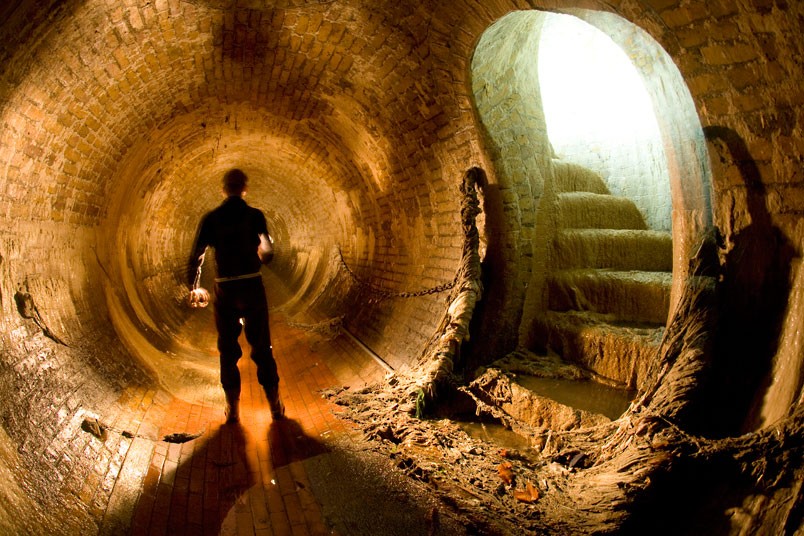
Jackie: The Underground.
Richard: The Metro.
Jackie: The Subway.
Richard: Whatever you call it, for Londoners, it's the Tube.
Jackie: And for this week's podcastsinenglish.com we're talking about the Tube because, amazingly, it's 150 years old.
Richard: Yes, it first started in 1863 and the first line: the Metropolitan line.
Jackie: 1863, Richard, the idea that they thought about digging huge tunnels underneath London, that's amazing, isn't it?
Richard: Unbelievable. And it was all dug by hand. They'd cut out a big trench, or a hole in the ground, and then they covered it up...
Jackie: Yeah
Richard: ...put the roof on and called (it) cut and cover.
Jackie: Cut and cover. And also, Richard, they used steam trains, didn't they?
Richard: I think that's even more remarkable: steam trains under the ground. And I think they only got rid of the last steam train in 1961.
Jackie: It's always been more than just a transport system though, hasn't it Richard? I'm thinking about during the Second World War.
Richard: Yes.
Jackie: Yes and, you know, people actually, I mean they slept in them overnight and... and there was also beds in there as well.
Richard: Yes
Jackie: Now, neither of us use the... the... the Tube nowadays um... but when I was in London in the 1980s, I used to use the Northern Line which [laughs] always had a very bad reputation.
Richard: The misery line we used to call it.
Jackie: Yeah. I used to get on at er... Archway and get off at er... Euston and er... I remember a couple of times when I was late for work, rushing for a train, I'd rush on to the carriage just as it was about to leave and then realise with horror that I'd got onto a smoking carriage...
Richard: [groans]
Jackie: ...and it was full of people smoking so I'd have to get off at the next station and get on a non smoking carriage. I mean nowadays it's amazing to think that you could smoke on the Underground.
Richard: Yes. Smoking was banned after a disaster, a fire at King's Cross Station in 1987. And as it happens, my train, I used to go through King's Cross Station, I got home from work, turned on the news and I saw that King's Cross Station was on fire. There was a huge fire there and I'd only just been through that station, about, what three quarters of an hour beforehand.
Jackie: Yes, a great tragedy, Richard, 31 people died that night.
Richard: Yes. And they believed that someone had dropped a cigarette on the old wooden escalators. So from that time they changed all the escalators, made them all metal and of course that's when they banned smoking.
Jackie: But we do have some advice for tourists coming to London and traveling on the Tube, don't we Richard?
Richard: Yes. First thing of course, you need a map.
Jackie: Now the London Underground map is wonderful. It's fantastically designed and very easy to use but...
Richard: ...it's not to scale. It's very famously...I think the most popular um... journey for tourists is going between Leicester Square and Covent Garden. One stop on the... on the map um... will cost you...
Jackie: Four pounds thirty.
Richard: Four pounds thirty. What people don't realise though: it's only 260 metres if you walk it above ground.
Jackie: Yeah. So don't take that trip. Secondly um... when you go up the escalator when you leave the... the station stand on the right.
Richard: People stand on the right and people walk, if they want to... if they're in a hurry, they walk on the left.
Jackie: Yes. It's an unwritten rule, isn't it?
Richard: Yes
Jackie: But perhaps the most important and the most famous advice for tourists is...
Richard: Mind the gap.
Jackie: Mind the gap.